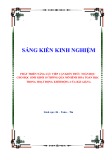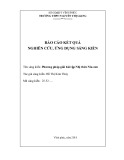
The minimum size of complete caps in (Z/nZ)2
Jack Huizenga
Department of Mathematics
University of Chicago
Chicago, IL 60637 USA
huizenga@uchicago.edu
Submitted: Oct 19, 2005; Accepted: Jul 12, 2006; Published: Jul 28, 2006
Mathematics Subject Classification: 51E22
Abstract
Aline in (Z/nZ)2is any translate of a cyclic subgroup of order n. A subset
X⊂(Z/nZ)2is a cap if no three of its points are collinear, and Xis complete if
it is not properly contained in another cap. We determine bounds on Φ(n), the
minimum size of a complete cap in (Z/nZ)2. The other natural extremal question
of determining the maximum size of a cap in (Z/nZ)2is considered in [8]. These
questions are closely related to well-studied questions in finite affine and projective
geometry. If pis the smallest prime divisor of n,weprovethat
max{4,p2p+1
2}≤Φ(n)≤max{4,p+1}.
We conclude the paper with a large number of open problems in this area.
1 Introduction
Ak-cap in AG(n, q)(affinen-space over Fq) is a subset X⊂AG(n, q)ofsizek,nothree
of whose points are collinear. When a k-cap is not contained in any (k+ 1)-cap, it is said
to be complete. The same definitions may be made for PG(n, q) (projective n-space over
Fq). There are two very natural extremal questions in the study of caps. First, what is
the maximum size of a cap in AG(n, q)orPG(n, q)? This question is of great importance
in coding theory, and relates to the existence of certain q-ary codes. A nice survey of this
question is provided in [4].
On the other hand, we could try to determine the minimum number of points in a
complete cap. This question was originally posed by B. Segre ([16, 17]) in the late 1950’s in
the special case of finite projective planes of order q. Most work in this field has concerned
the two-dimensional case, so we will restrict our attention to n= 2. An essentially trivial
lower bound for the minimum number of points in a complete cap in PG(2,q)isgiven
the electronic journal of combinatorics 13 (2006), #R58 1







































